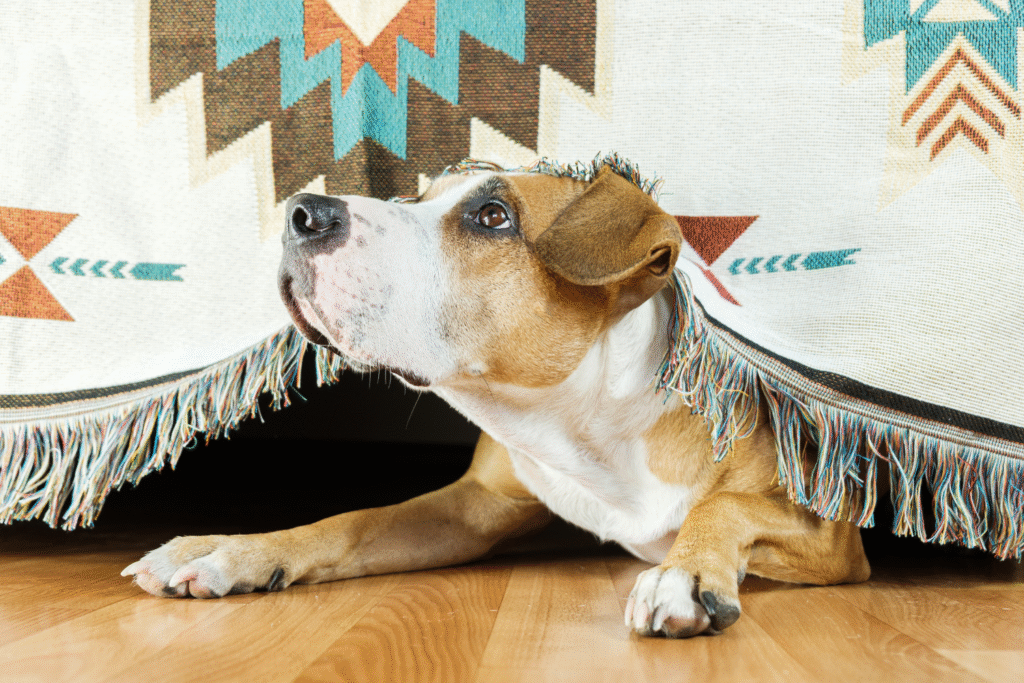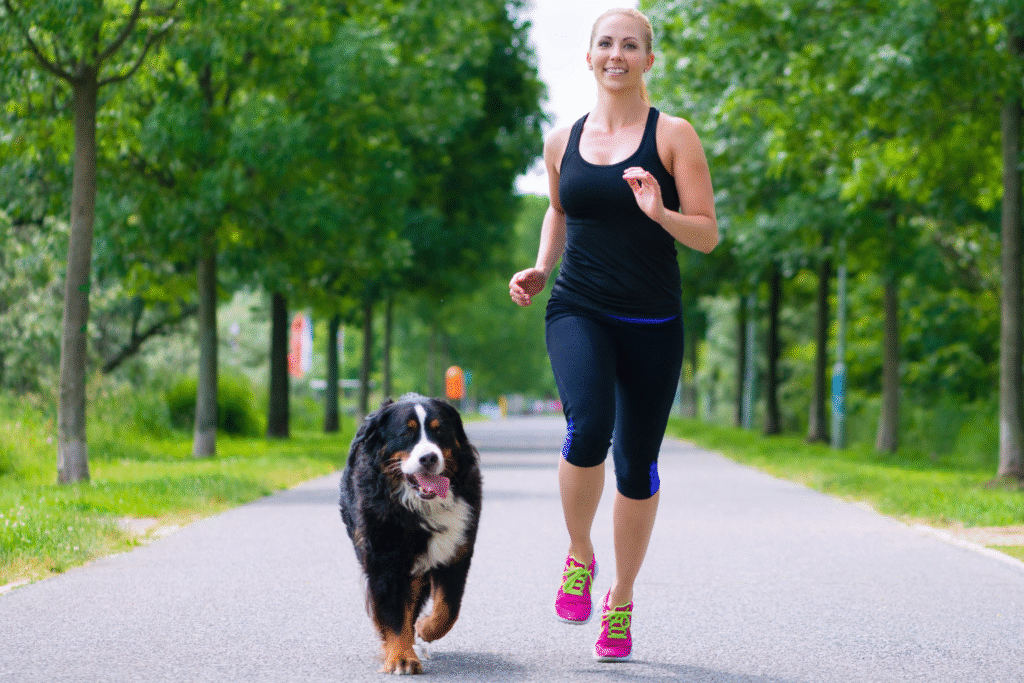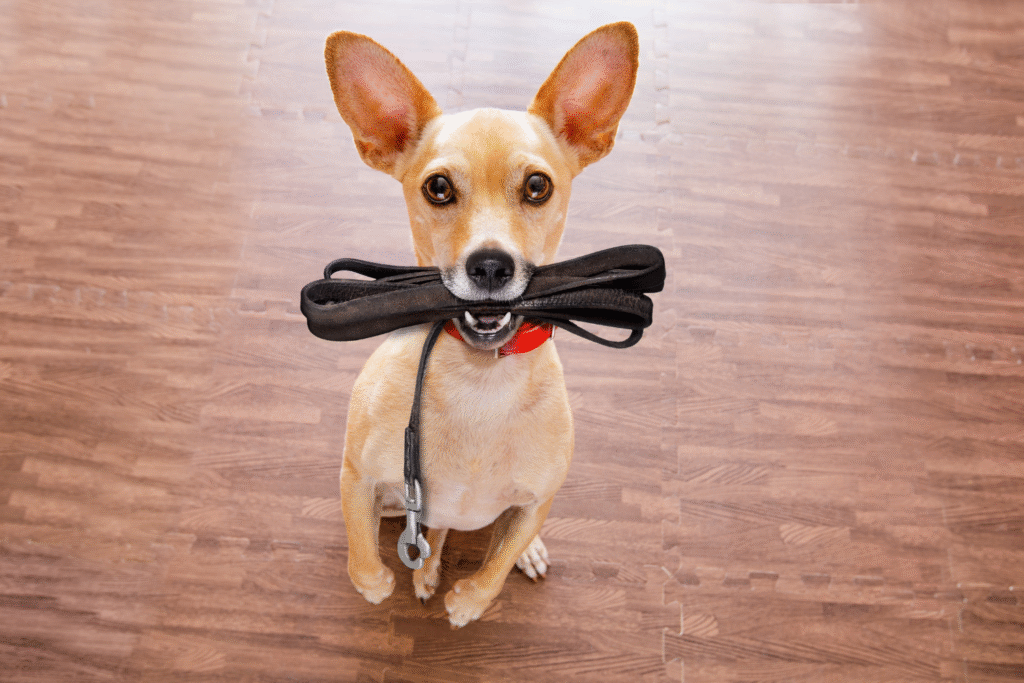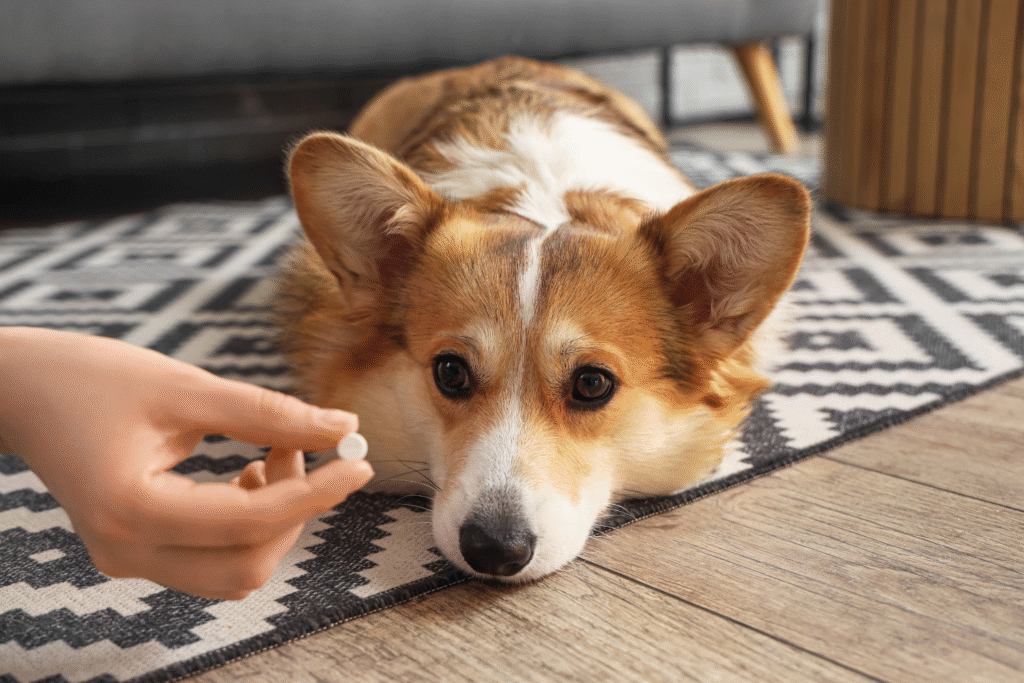Your furry friend might be silently screaming for help.

That trembling ball of fur hiding under your bed isn’t just being dramatic. Dogs experience anxiety just like humans do, and the signs aren’t always obvious. While we might assume our pets live carefree lives of belly rubs and treat time, the reality is that millions of dogs struggle with genuine anxiety disorders that can severely impact their quality of life. Recognizing the symptoms and knowing how to help can transform your stressed pup into the confident companion they were meant to be.
1. Destructive behavior often masks deeper emotional turmoil.

Your dog isn’t chewing up your favorite shoes out of spite or boredom. Destructive behaviors like excessive chewing, digging, or scratching are classic anxiety responses that dogs use to self-soothe when they’re overwhelmed. According to the American Kennel Club, separation anxiety affects roughly 14% of dogs and often manifests through destructive actions within the first 30 minutes of being left alone.
Think of it like a human biting their nails during a stressful meeting. Dogs don’t have the luxury of understanding why they feel anxious, so they resort to physical activities that release some of that pent-up nervous energy. The destruction isn’t random either – anxious dogs typically target items that smell strongly of their owners, which is why your worn sneakers or the couch cushion where you always sit become prime targets.
2. Physical symptoms reveal what words cannot express.

Watch your dog’s body language closely because it’s telling a story their barks can’t communicate. Excessive panting when it’s not hot, drooling without the presence of food, and trembling are all physical manifestations of canine anxiety. These symptoms mirror human anxiety responses more closely than you might expect, as reported by veterinary behaviorists at the University of Pennsylvania.
Digestive issues also frequently accompany anxiety in dogs, leading to loss of appetite, diarrhea, or even vomiting during particularly stressful episodes. Some anxious dogs develop repetitive behaviors like tail chasing or excessive licking that can actually cause physical harm over time. Your dog’s body is essentially hitting the panic button, triggering the same fight-or-flight response that humans experience during anxiety attacks.
3. Environmental triggers hide in plain sight throughout your home.

Something as innocent as the sound of your keys jingling can send an anxious dog into a complete meltdown. Environmental triggers are often subtle and can develop over time through negative associations that we don’t even realize we’re creating. As discovered by researchers at the ASPCA, common household sounds like vacuum cleaners, thunderstorms, or even certain TV shows can become anxiety triggers for sensitive dogs.
The tricky part about environmental triggers is that they’re often inconsistent, making them harder to identify and address. Your dog might be perfectly fine with strangers on Tuesday but completely lose it when the mail carrier arrives on Wednesday. Creating a trigger log can help you identify patterns and understand what specific elements in your dog’s environment are causing distress.
4. Exercise becomes your secret weapon against canine stress.

Mental and physical exhaustion work like magic bullets for anxious dogs because a tired dog is typically a calmer dog. Regular exercise doesn’t just burn off excess energy – it actually changes your dog’s brain chemistry by releasing endorphins and reducing cortisol levels. The key is finding the right balance because over-exercising can actually increase anxiety in some dogs.
Different dogs need different types of stimulation to achieve that perfect state of calm satisfaction. Some dogs thrive on long walks and fetch sessions, while others prefer puzzle games and training exercises that challenge their minds. The goal is to create a routine that leaves your dog pleasantly exhausted rather than wound up and overstimulated.
5. Professional intervention sometimes becomes absolutely necessary.

Severe anxiety cases require more than home remedies and good intentions. Veterinary behaviorists can prescribe anti-anxiety medications that work similarly to human antidepressants, helping to rebalance brain chemistry while you work on behavioral modifications. This isn’t giving up or taking the easy way out – it’s providing your dog with the chemical support they need to learn new, healthier coping mechanisms.
Medication works best when combined with behavioral therapy, creating a comprehensive treatment approach that addresses both the symptoms and the root causes. Some dogs only need medication temporarily while they learn new behaviors, while others benefit from long-term pharmaceutical support. The important thing is working with professionals who understand that anxiety is a legitimate medical condition, not a character flaw.
6. Creating safe spaces transforms your home into a sanctuary.

Every anxious dog needs a designated retreat zone where they can escape when the world feels too overwhelming. This space should be consistently available, comfortable, and associated only with positive experiences. Think of it as your dog’s personal panic room – somewhere they can go to decompress without any demands or expectations.
The location and setup of this safe space matters more than you might think. Some dogs prefer dark, enclosed areas like crates or under beds, while others feel safer in open spaces where they can see everything around them. Adding items that smell like you, playing calming music, or using pheromone diffusers can enhance the calming effect of their sanctuary.
7. Consistency in routine provides the stability anxious minds crave.

Unpredictability is anxiety’s best friend, which makes establishing consistent daily routines one of your most powerful tools. Anxious dogs thrive when they know what to expect and when to expect it. This doesn’t mean your life needs to become rigid, but having regular meal times, walk schedules, and bedtime routines can significantly reduce your dog’s overall stress levels.
Building routine takes time and patience, especially if your dog’s anxiety has been developing for months or years. Start with small, manageable changes and gradually expand the routine as your dog becomes more comfortable. The predictability helps anxious dogs feel more in control of their environment, which naturally reduces their need to stay in constant alert mode.
8. Counter-conditioning rewrites your dog’s emotional responses completely.

This technique works by changing how your dog feels about anxiety-triggering situations rather than just managing their reactions. Instead of your dog associating the doorbell with scary strangers, counter-conditioning helps them connect that sound with positive experiences like treats or playtime. The process requires patience because you’re essentially rewiring years of learned fear responses.
Success with counter-conditioning depends heavily on timing and consistency. You’ll start by exposing your dog to very mild versions of their triggers while simultaneously providing something they absolutely love. Over weeks or months, you gradually increase the intensity of the trigger while maintaining those positive associations. Eventually, your dog’s brain starts automatically pairing the previously scary stimulus with good things, creating a completely different emotional response.
9. Natural calming aids offer gentle support without side effects.

Thundershirts, calming pheromone sprays, and anxiety-reducing supplements can provide that extra bit of support your dog needs during particularly stressful periods. These tools work best as part of a comprehensive anxiety management plan rather than standalone solutions. The gentle pressure from anxiety wraps mimics the calming effect of being held, while pheromone products recreate the comforting scents mother dogs produce to soothe their puppies.
Hemp-based calming treats and supplements containing ingredients like L-theanine or melatonin have gained popularity among dog owners seeking natural alternatives to prescription medications. While these products can be remarkably effective for mild to moderate anxiety, they work differently for every dog. Some pets respond beautifully to herbal remedies, while others need the stronger intervention that only prescription medications can provide.
